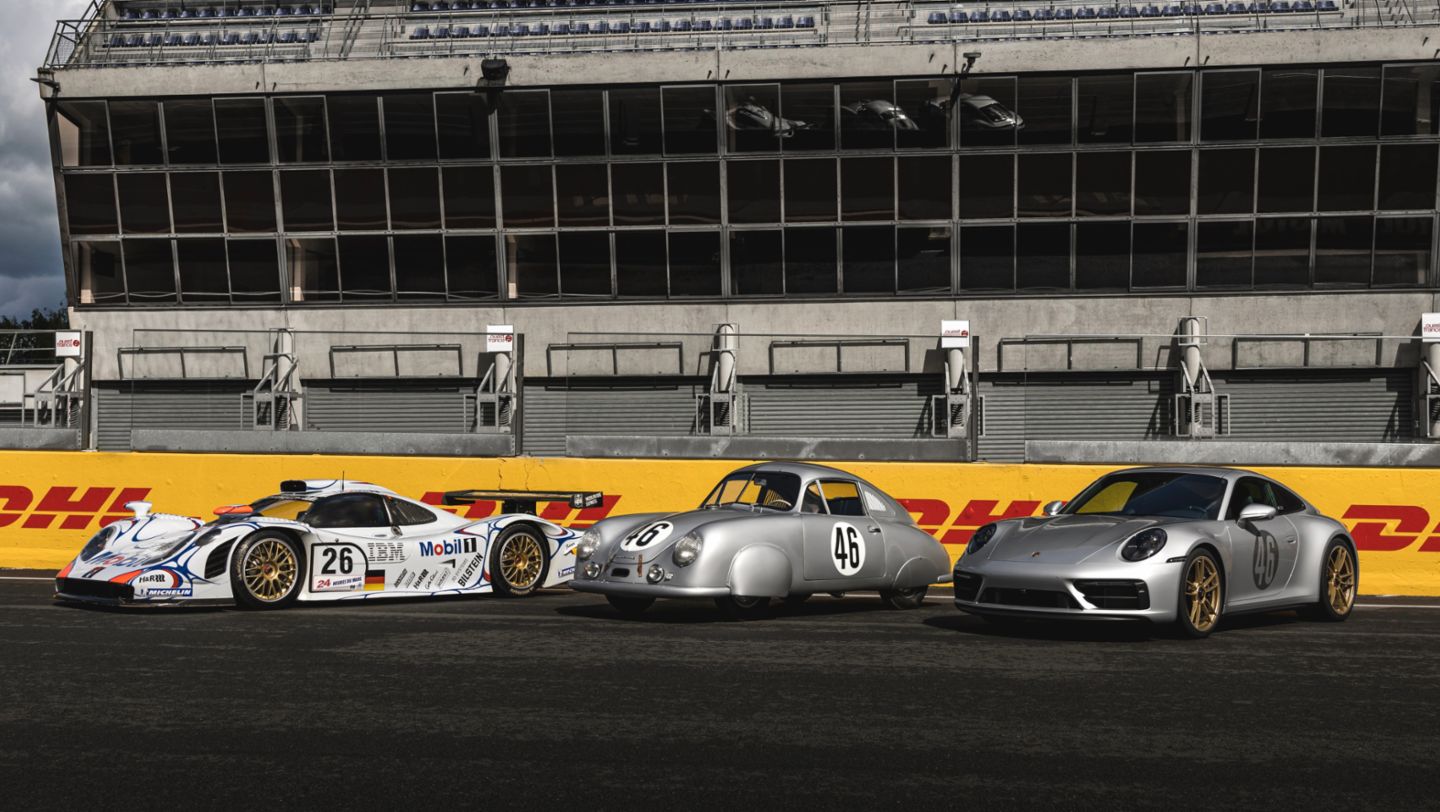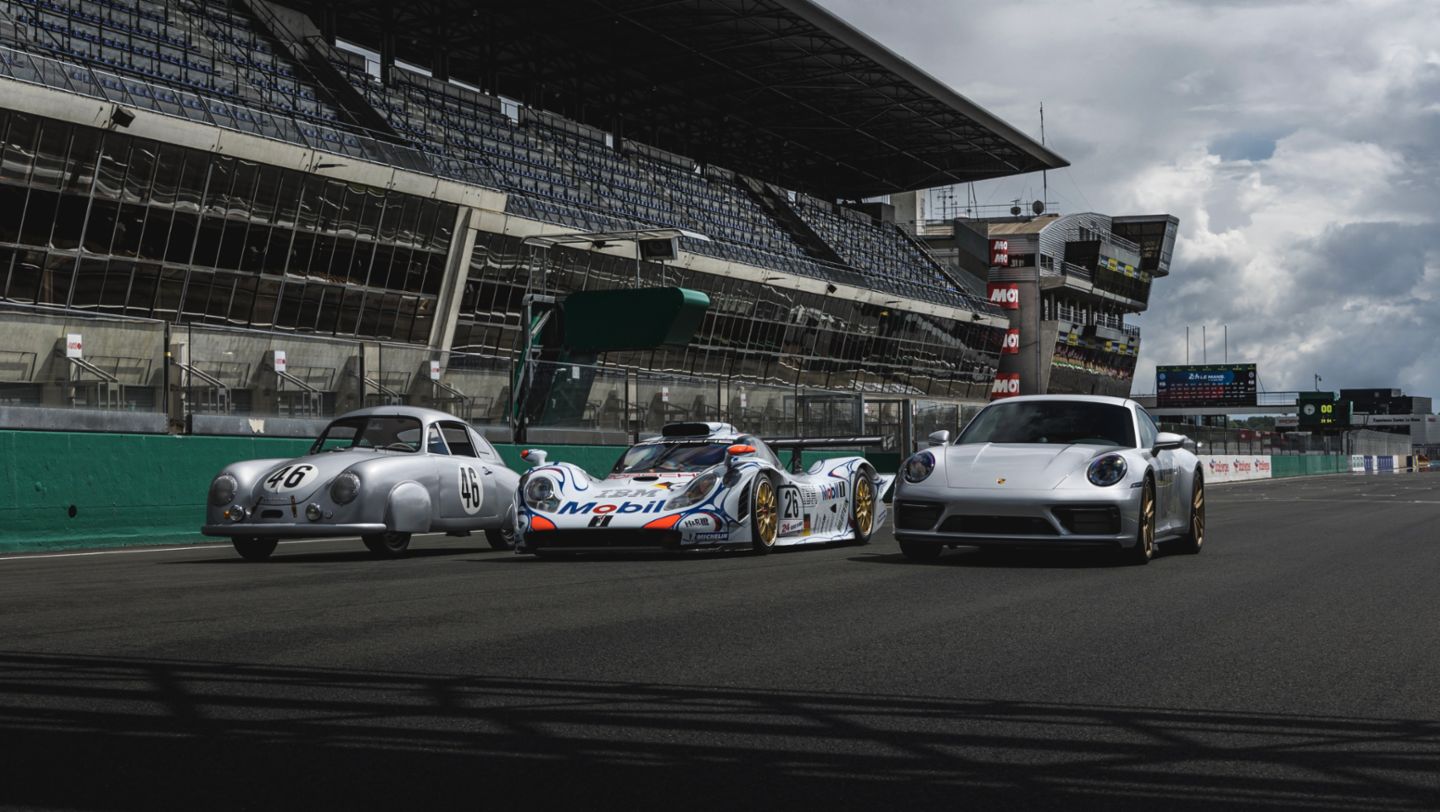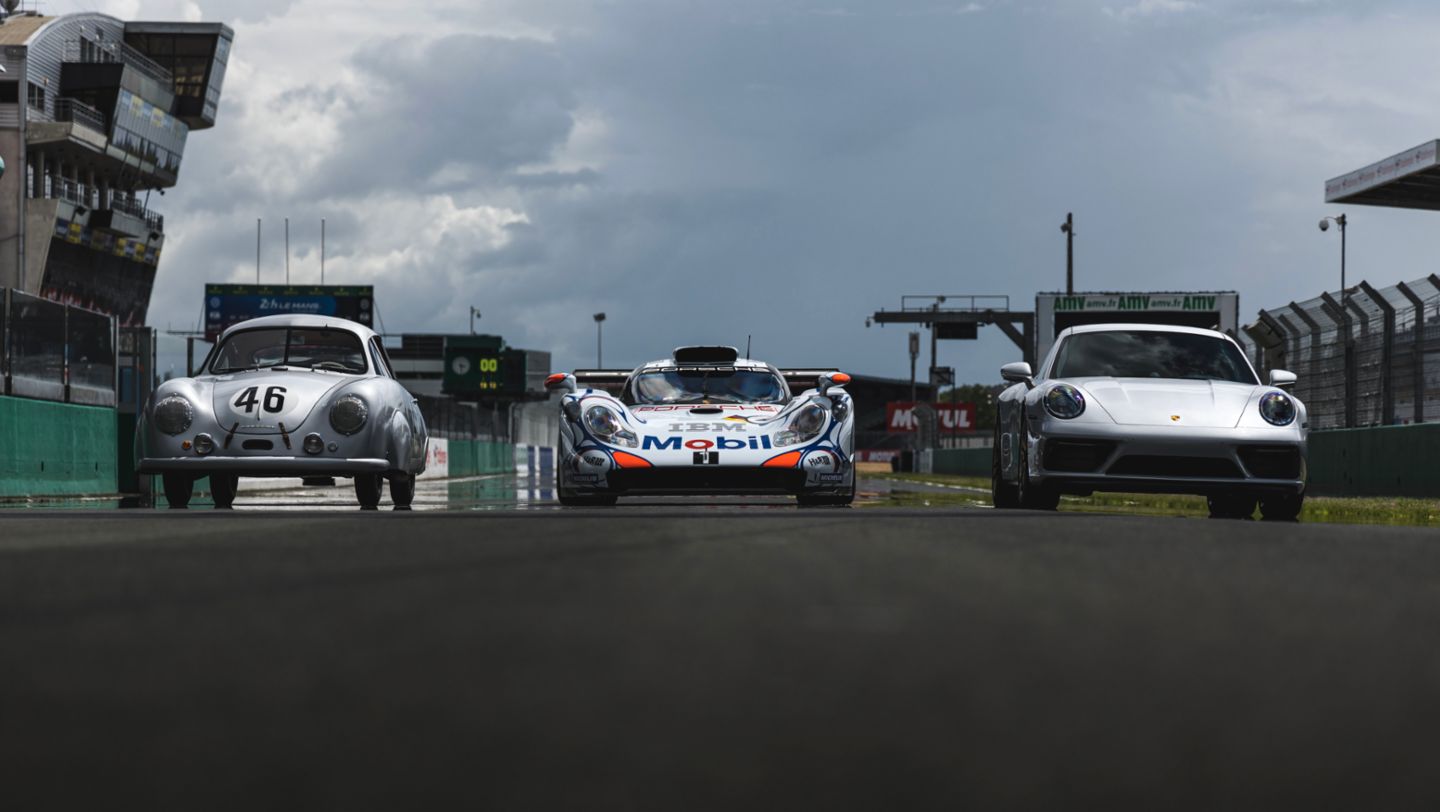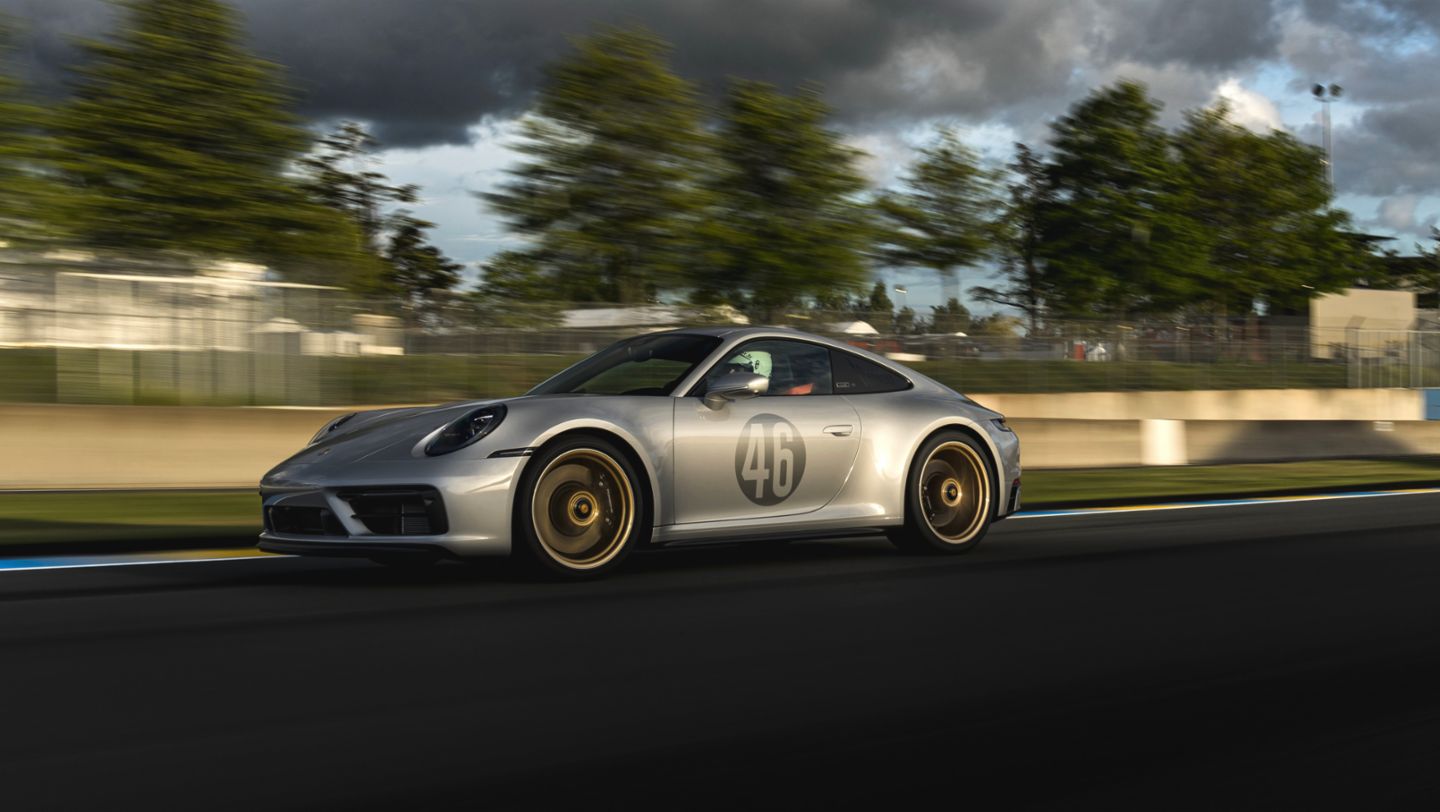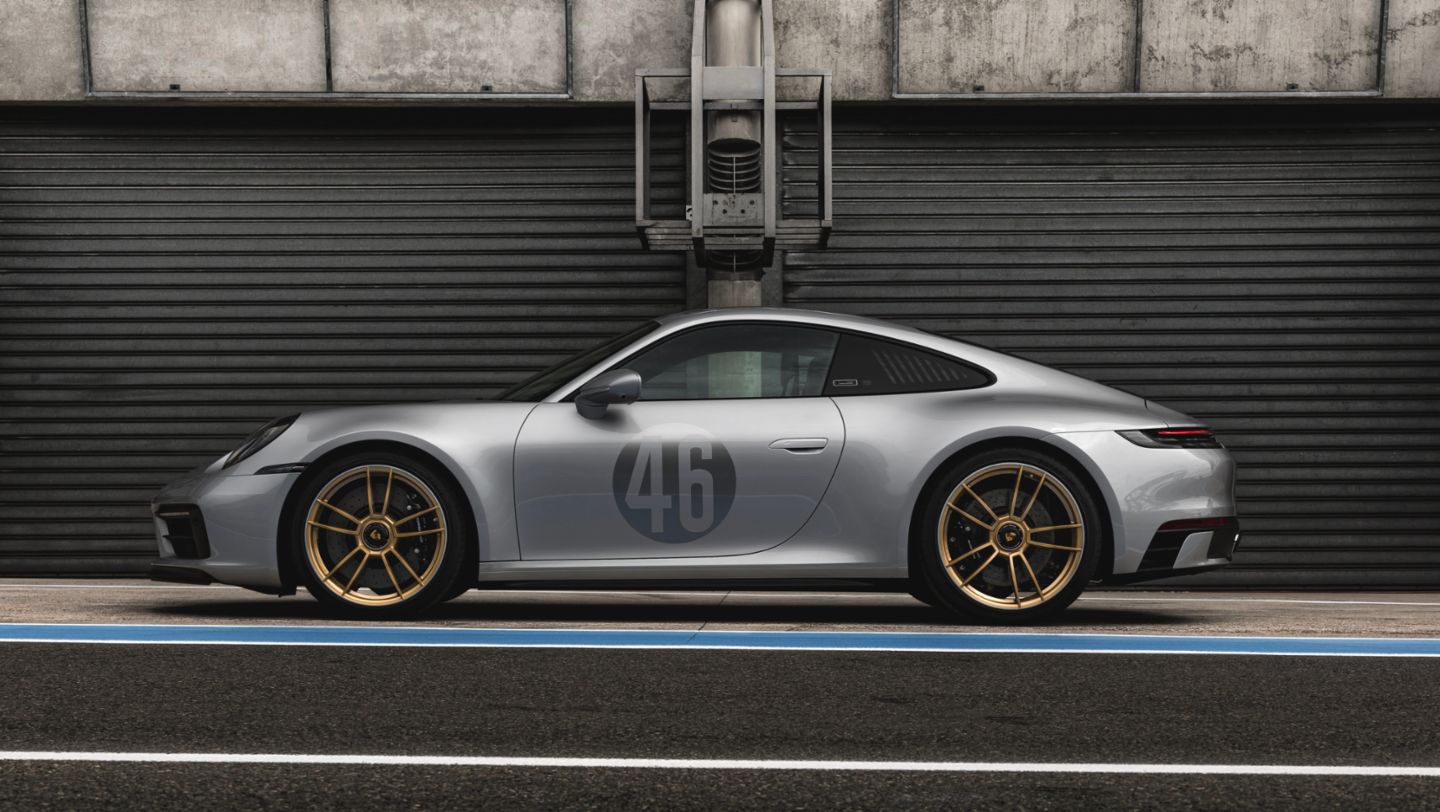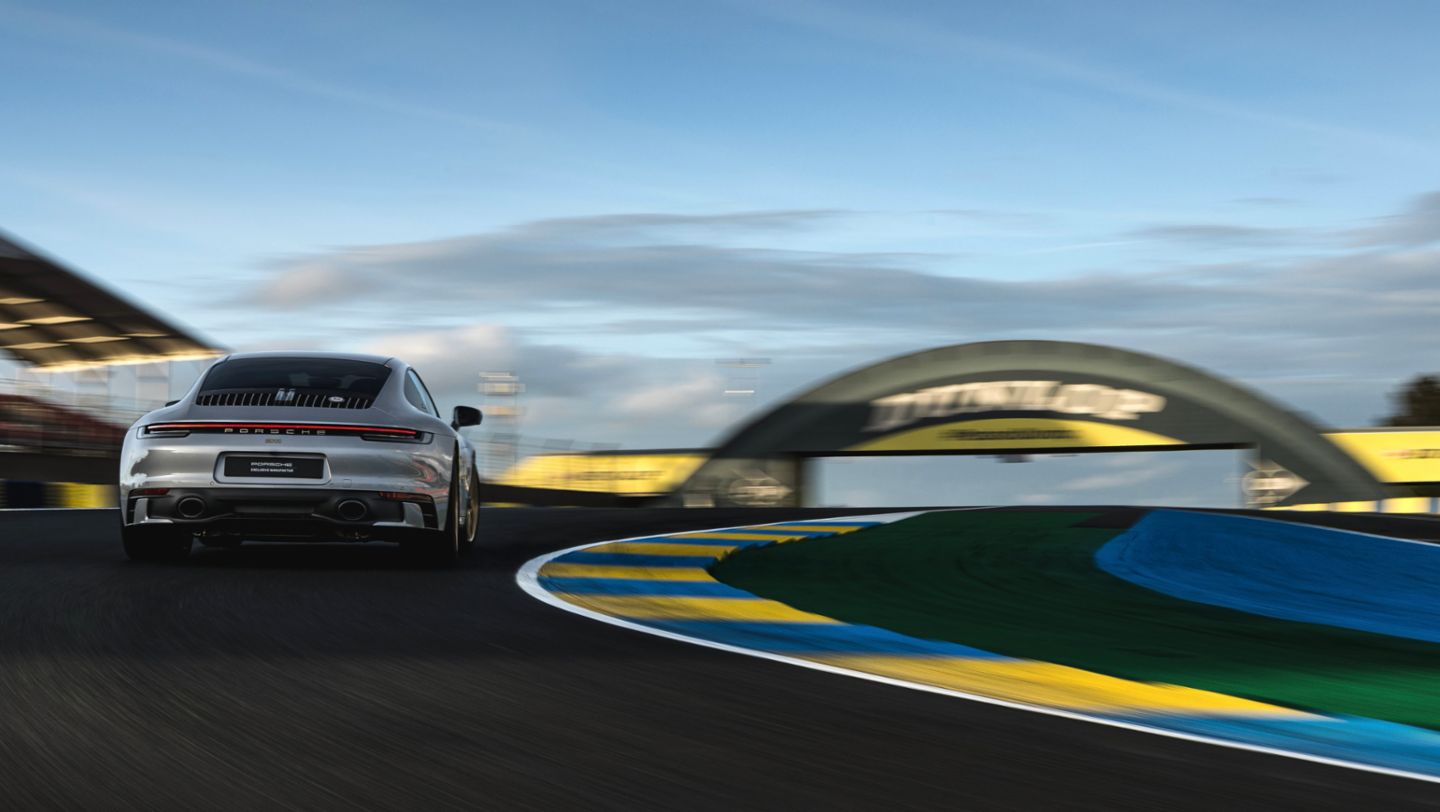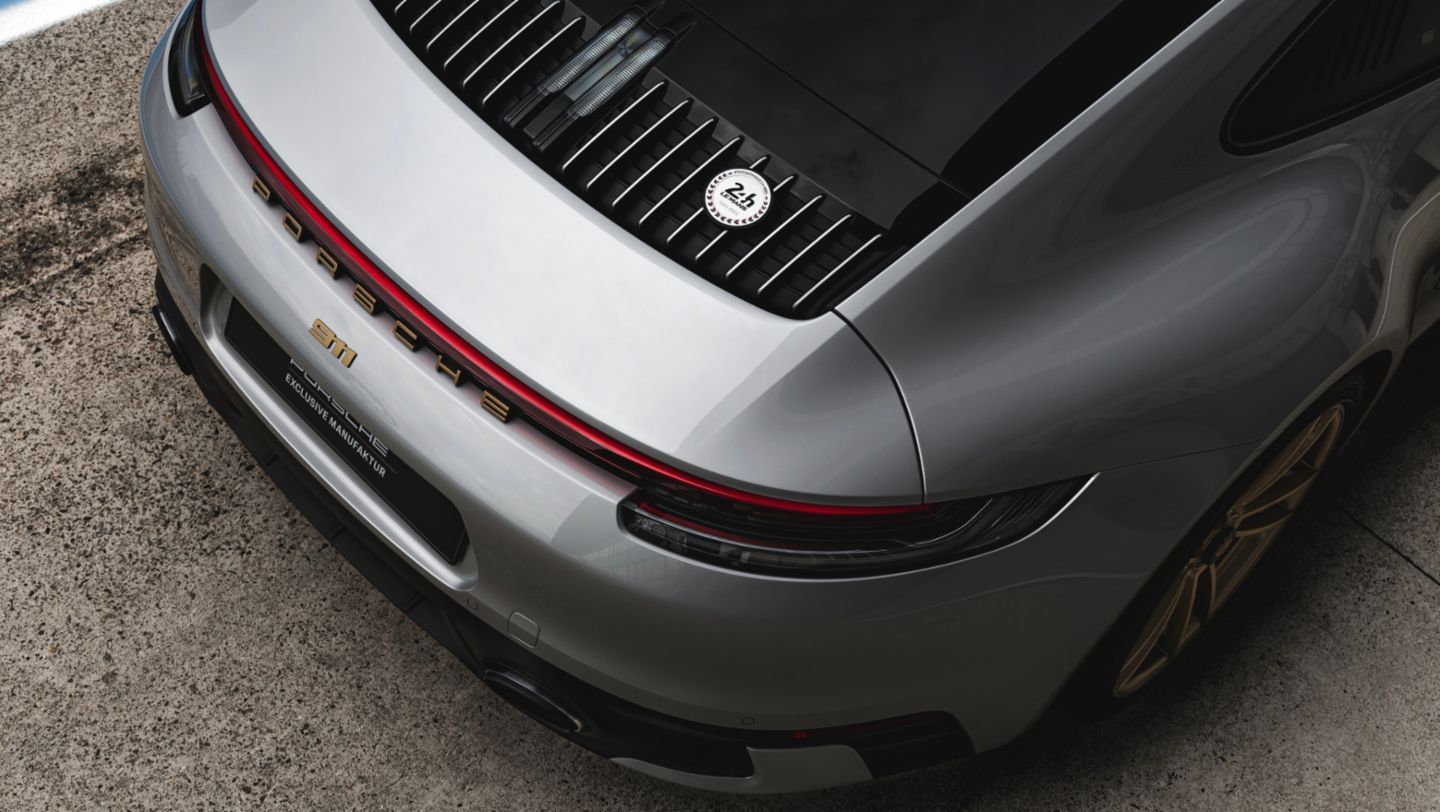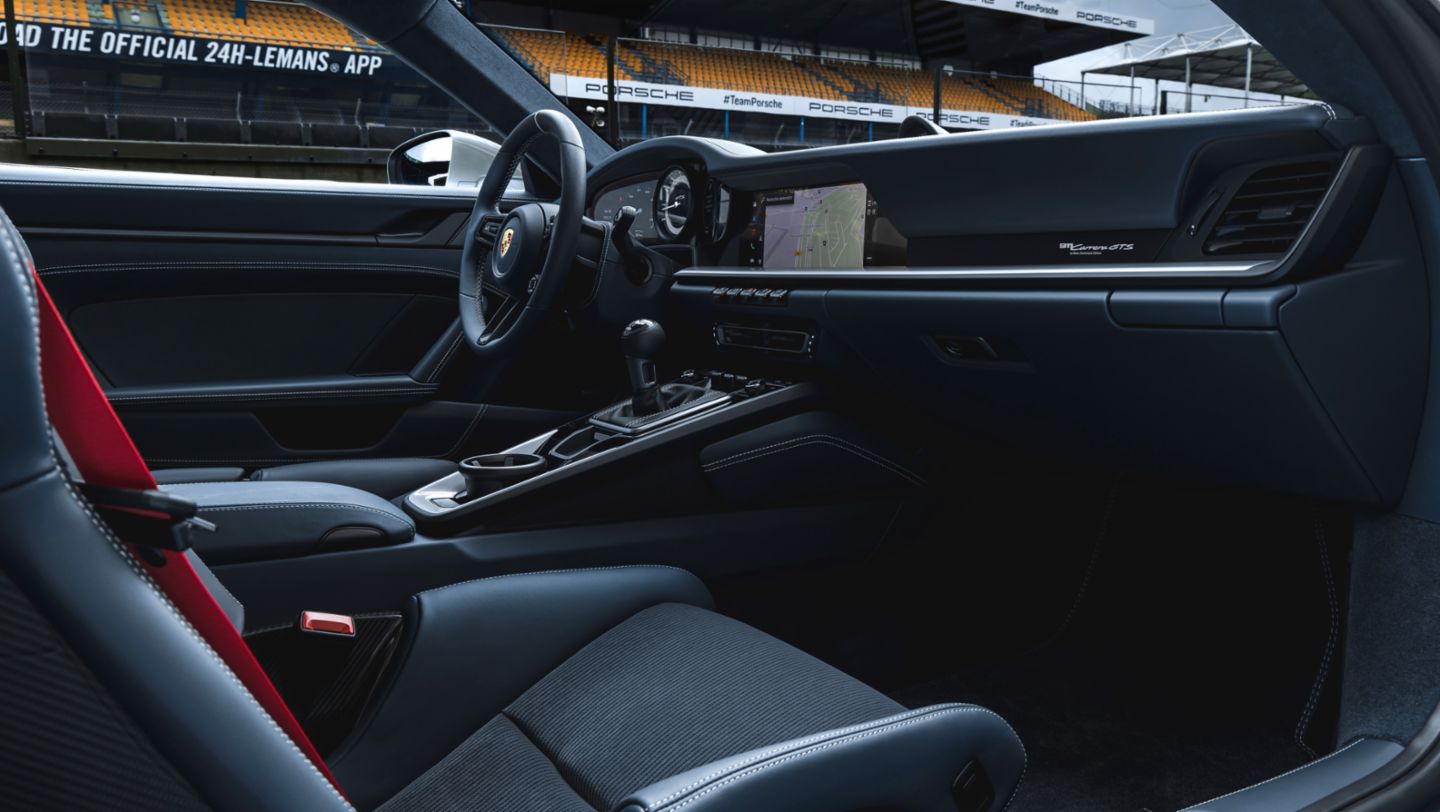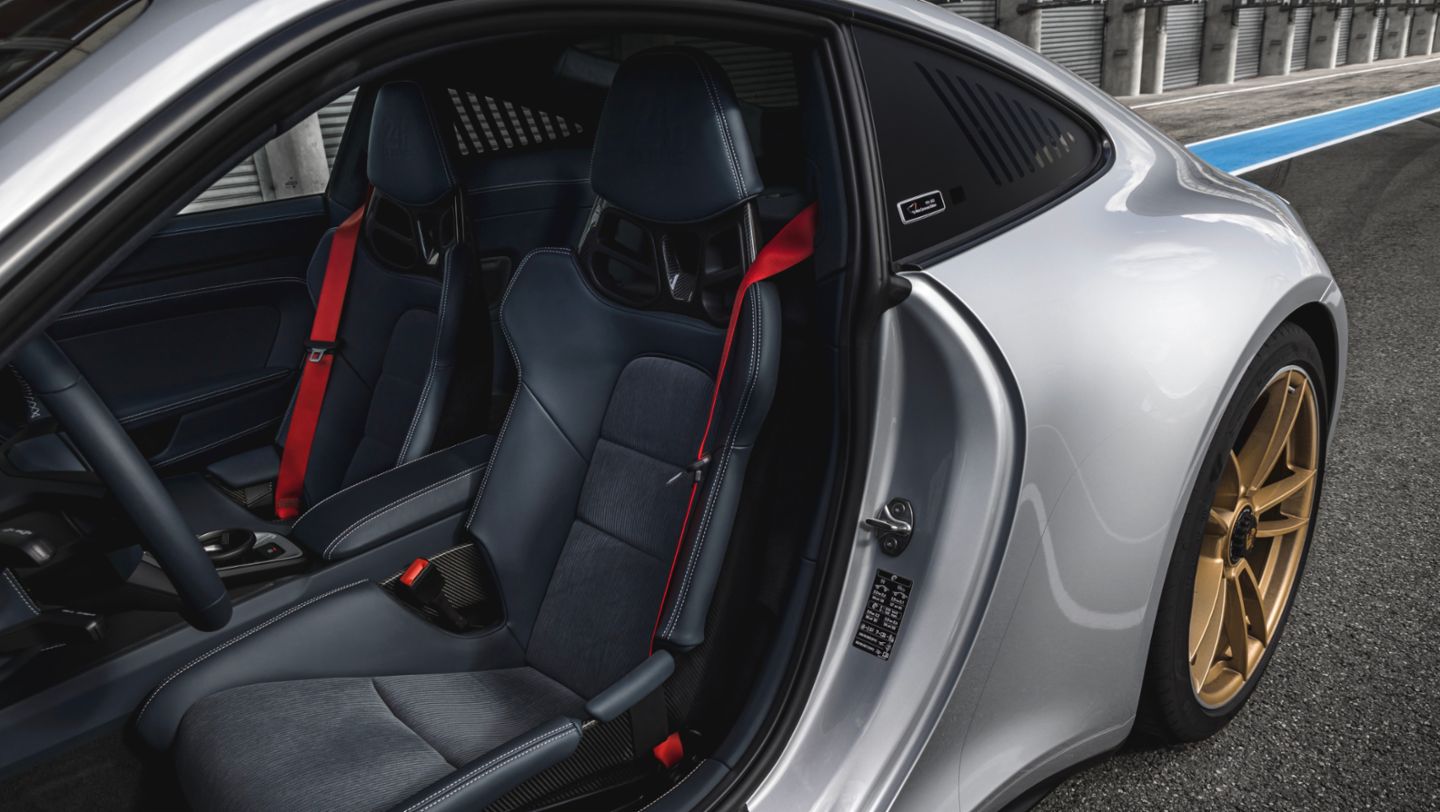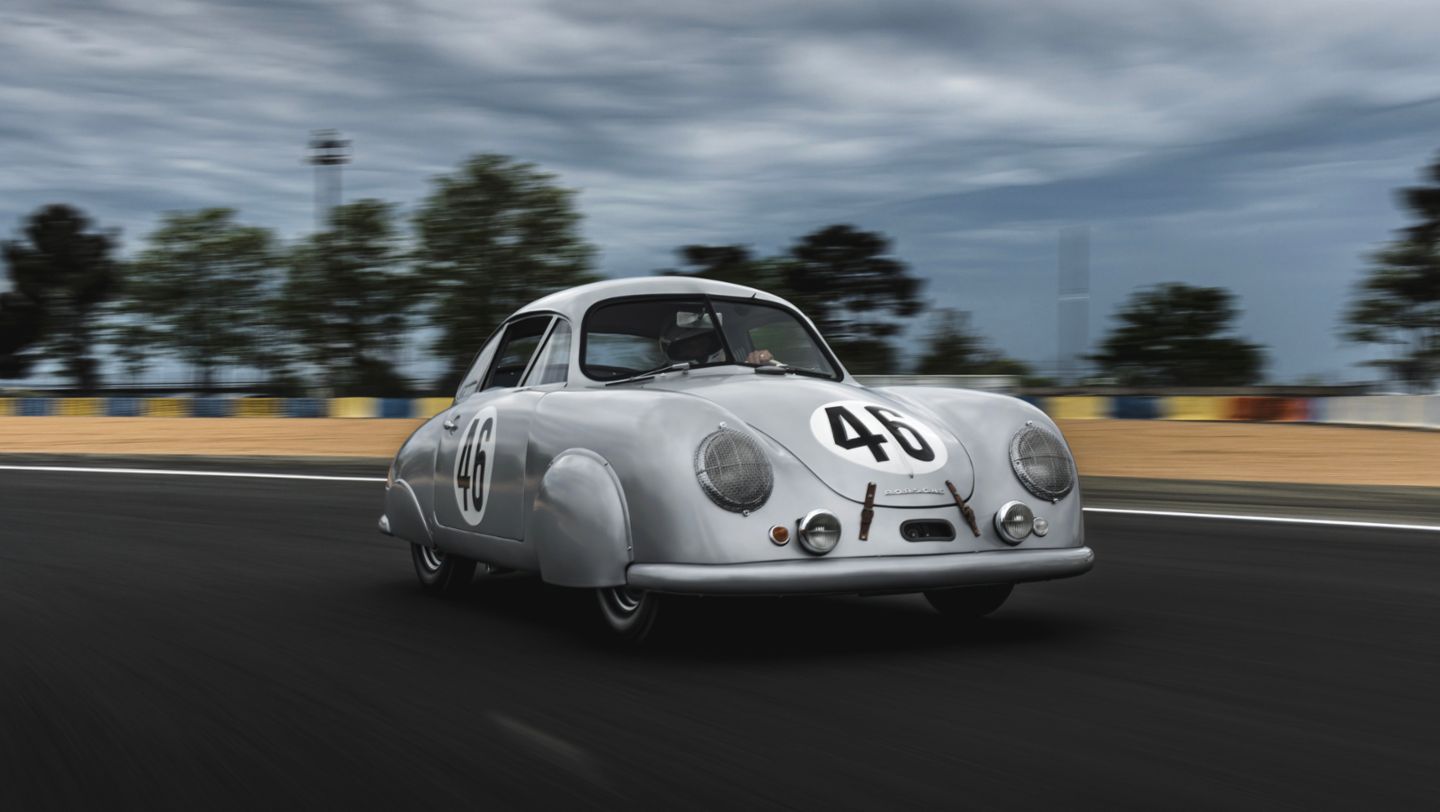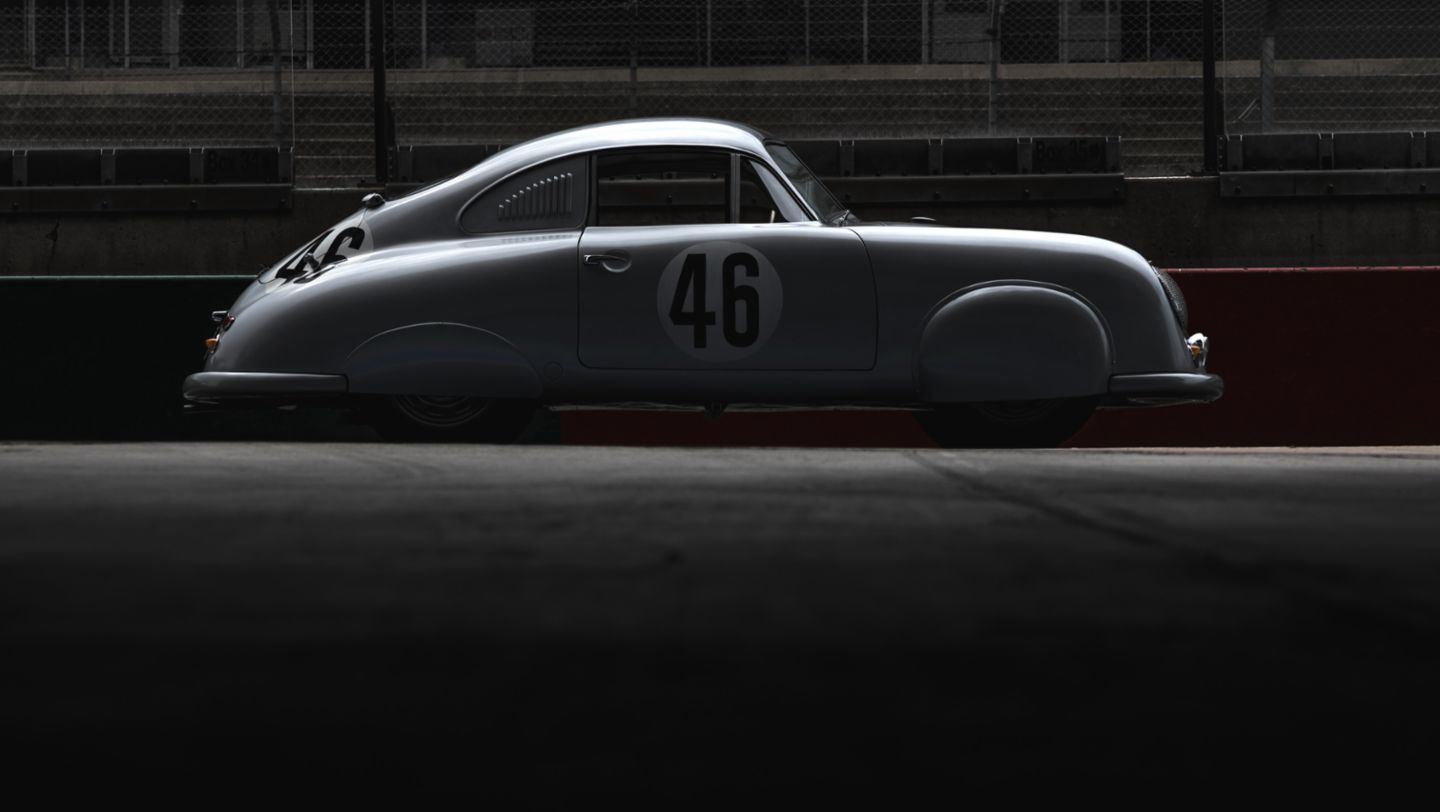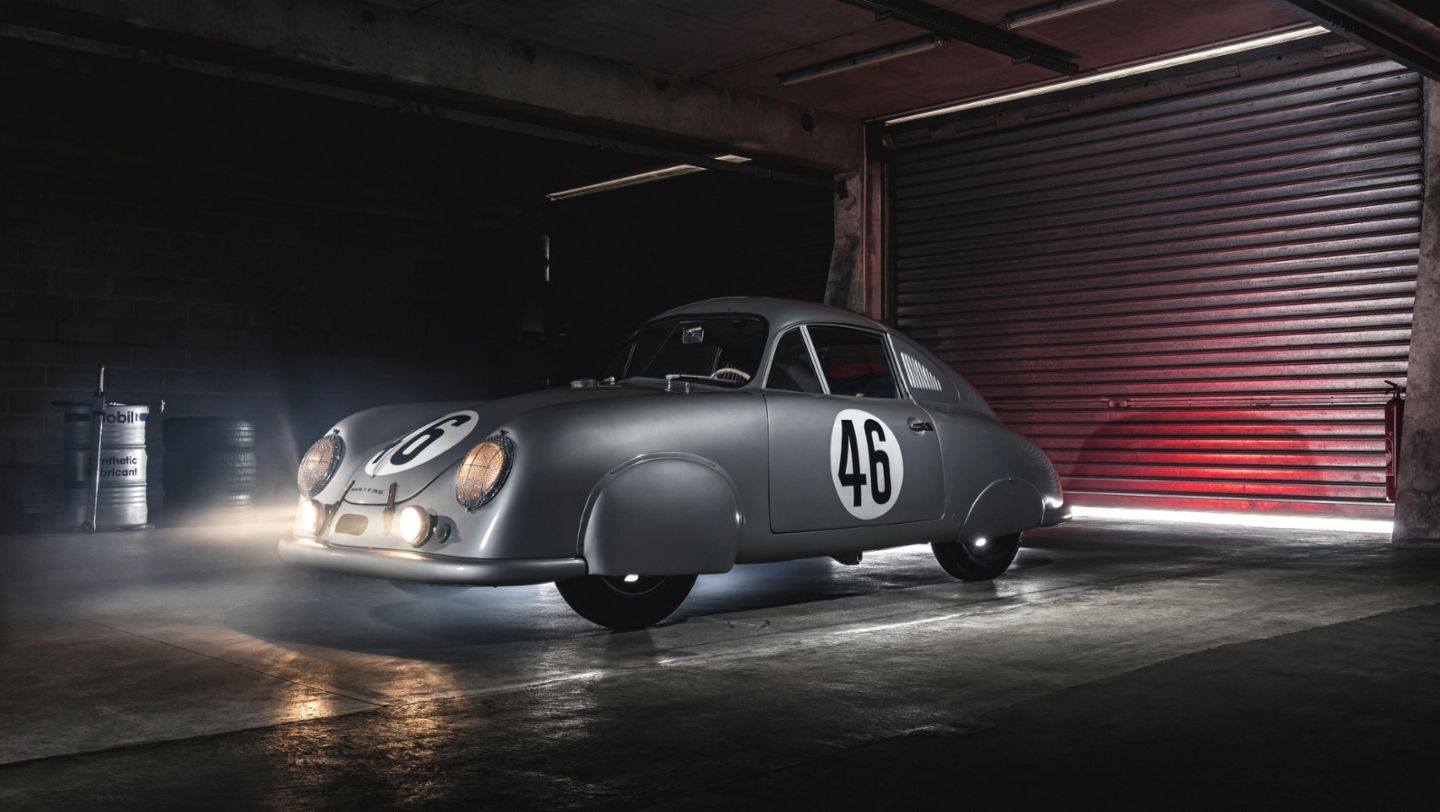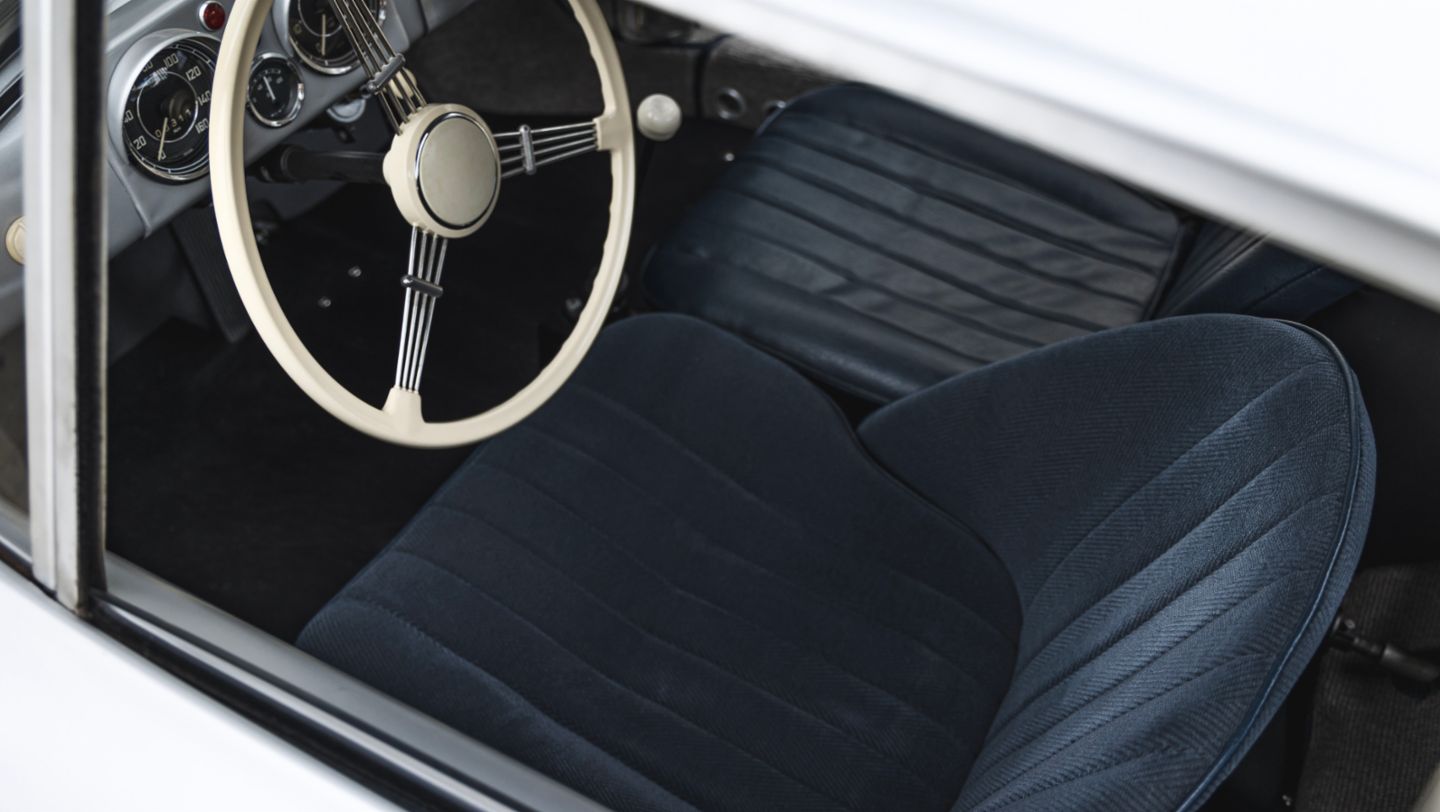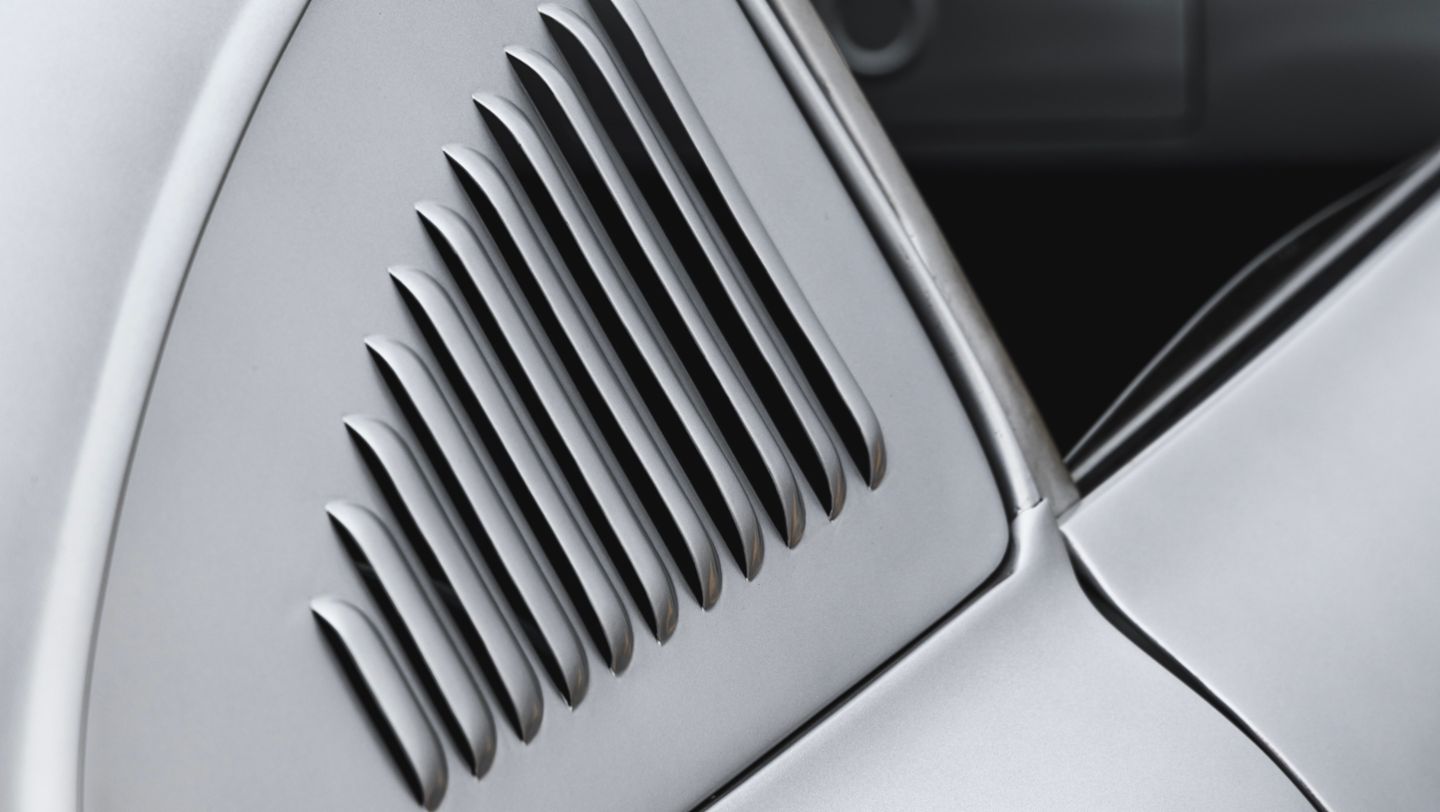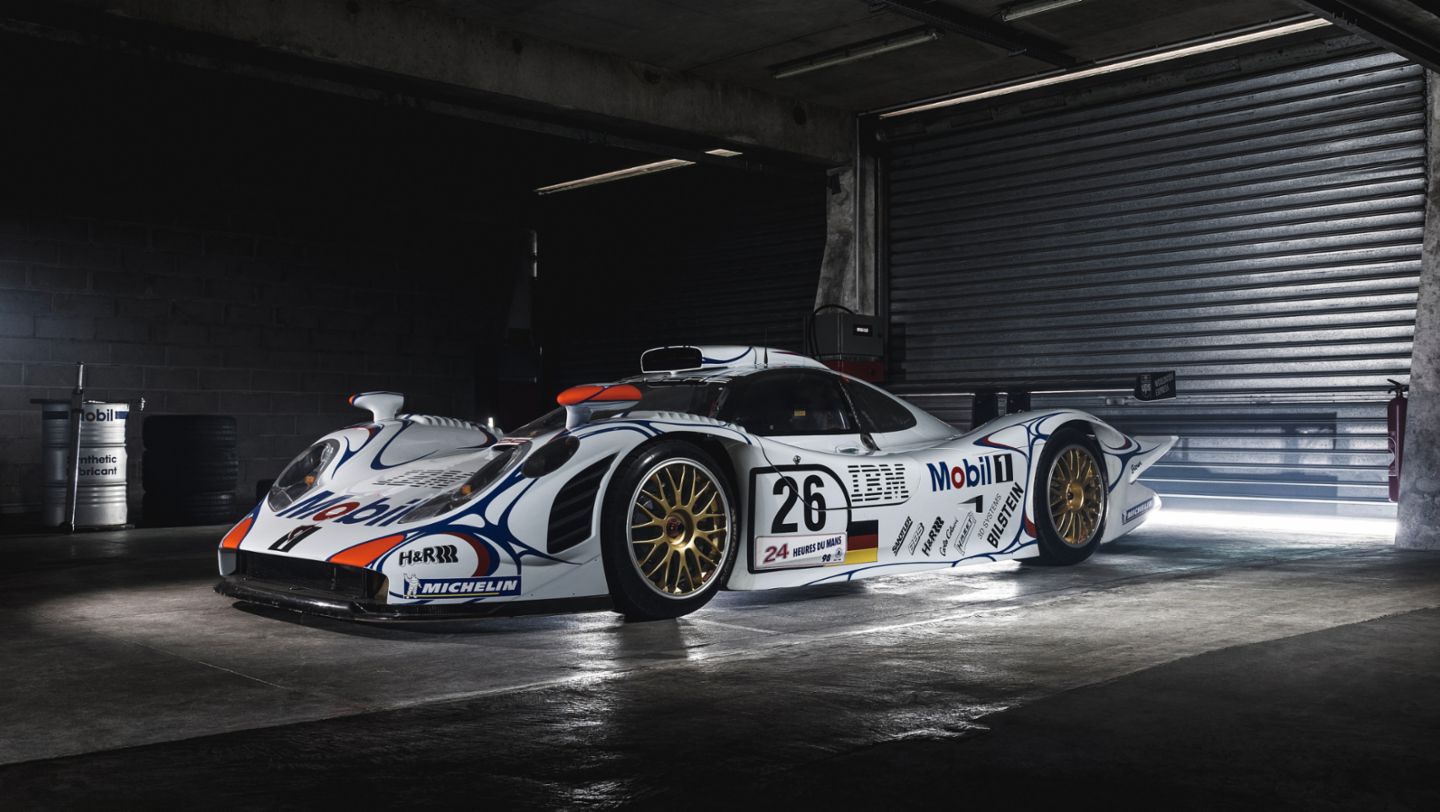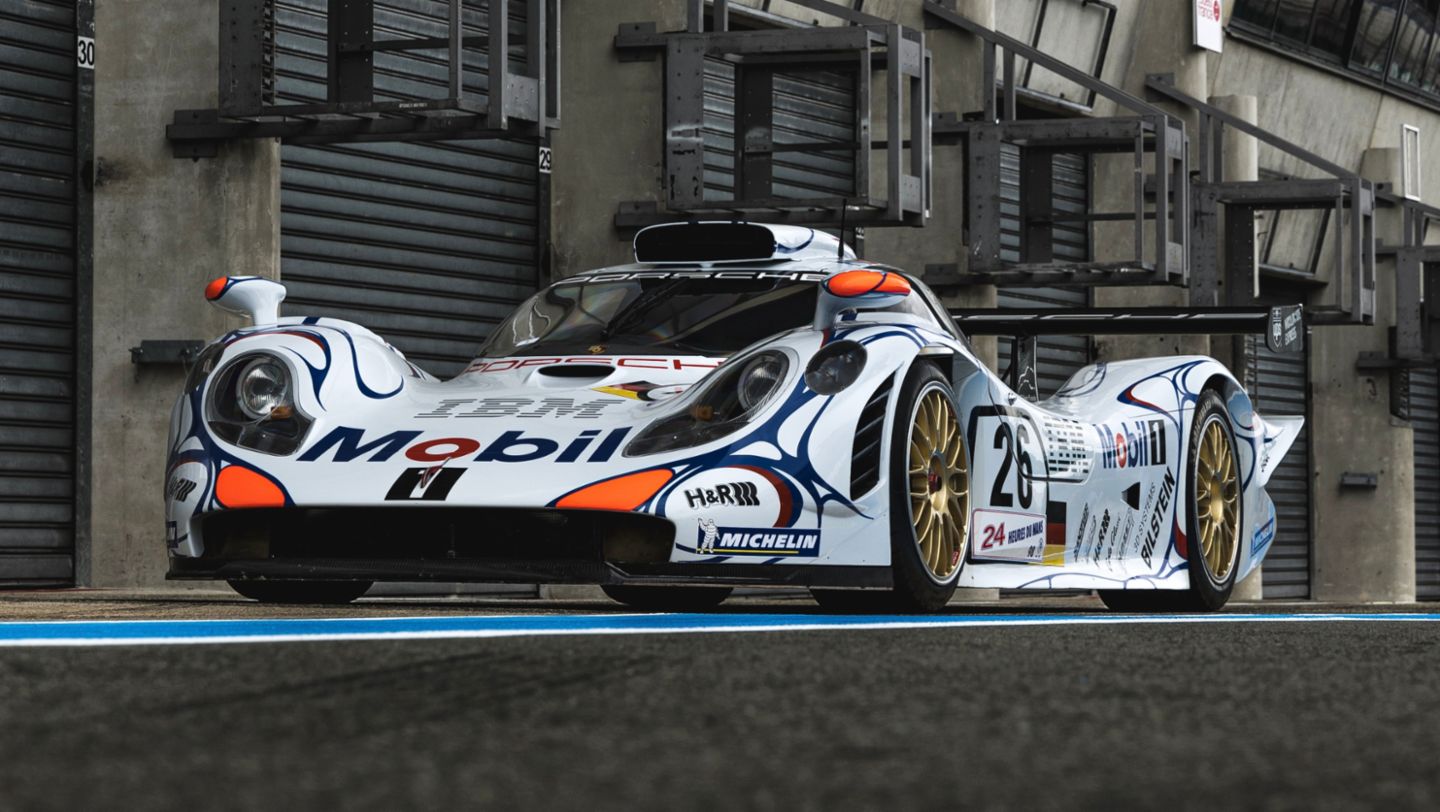The 911 Carrera GTS Le Mans Centenaire Edition is inspired by two winning cars: the Porsche 356 SL and the 911 GT1 '98. By reinterpreting their design elements, the result is a modern sports car for the “gentleman driver”. The edition model is available exclusively on the French market.
"We are really proud to present this model today,” says Marc Meurer, Managing Director of Porsche France. “The 911 Carrera GTS Le Mans Centenaire Edition is the fruit of the expertise and shared passion of our teams at Porsche France, Style Porsche and Porsche Exclusive Manufaktur."
An important partner for the realisation of this special edition was also the Automobile Club de l'Ouest (ACO). “The history of the 24 Hours of Le Mans is intimately linked with that of Porsche. A prestigious brand that is celebrating its 75th anniversary this year. This market edition is a fantastic tribute to the greatest endurance race in the world," says Pierre Fillon, President of the ACO. “We would like to thank Porsche for its commitment to endurance racing and for continuing to give car enthusiasts something to dream about.”
The special edition is based on the 911 Carrera GTS. The 353 kW (480 PS, 911 Carrera GTS (2023): Fuel consumption* combined (WLTP) 11.4 – 10.4 l/100 km, CO₂ emissions* combined (WLTP) 258 – 236 g/km, CO₂ class G ) turbocharged six-cylinder boxer engine in combination with the standard performance chassis offers typical Porsche performance. Customers can choose between a 7-speed manual transmission and an 8-speed PDK transmission.
With Le Mans details and newly interpreted design elements of the winning cars
The concept of the 911 Carrera GTS Le Mans Centenaire Edition has been maturing since 2020. The special occasion was the 100th anniversary of the 24 Hours of Le Mans. Numerous design details were developed specifically for this 911. For example, a badge with the "24h Le Mans" logo and laurel wreath design on the rear lid grille as well as a high-quality badge with the Le Mans race track outline in French tricolour and the anniversary lettering on the B-pillar are reminders of the endurance classic. The "Born in Le Mans, Manufactured in Zuffenhausen" decorative decal on the rear end also attracts attention, underlining the supra-regional cooperation. Individual elements of the interior can also be seen as a tribute to the 24 Hour race: for example, the Le Mans racetrack embossed on the centre armrest, the "24h Le Mans" logo on the headrests or the model lettering on the door sill trims.
In addition, the two Le Mans-winning cars 356 SL (1951) and 911 GT1 '98 served as sources of inspiration for the 911 Carrera GTS Le Mans Centenaire Edition. Features of the 356 SL can be found in a modern version in the exterior of the edition. Le Mans Silver Metallic (7SD) quotes the exterior colour of the first 24 Hours of Le Mans winner at the time and was specially reissued for the special model as part of the "Paint to Sample Plus” programme. Like the 356 SL when it won in 1951, the 911 special model also features the starting number “46” on the exterior. In the interior, the Graphite Blue leather and Graphite Blue corduroy of the historic racing car have been transferred to the full bucket seats of the modern 911 Carrera GTS. The GT sports steering wheel is also finished in Graphite Blue leather. Elegant accents are set by the contrasting colour Cayon. It can be found on the 12 o'clock marker on the Graphite Blue leather steering wheel, on the dials of the instrument cluster and SportChrono clock as well as on the decorative stitching.
The other starting point for newly interpreted design elements was the 911 GT1 '98. The rims of the edition model, for example, are painted in Aurum and bear a fineline in Le Mans Silver Metallic. The side windows in the rear come with decorative a décor in Black. This visually creates the impression of air outlets (louvers), like those the winning racing car had. In addition, red seat belts are reminiscent of the 911 GT1 '98. Every buyer of the edition receives an individual key pouch and a car cover in Graphite Blue for indoor use.
Porsche and Le Mans
The 911 Carrera GTS Le Mans Centenaire Edition encapsulates the link between Porsche and the prestigious 24 Hours of Le Mans: Porsche has been competing without interruption since 1951. Since then, the sports car manufacturer has achieved a total of 19 overall victories and 110 class wins – a unique track record. After its very first entries, racing became part of the DNA of the Porsche brand. And it was racing that repeatedly drove the sports car manufacturer to technological innovations. Porsche tested a number of new developments on the racetrack at Le Mans before they were used in series production cars.
As part of this year's 24 Hours of Le Mans, Porsche has launched a special fundraising campaign: For each of the race laps driven by the three factory Porsche 963s, 750 euros went into a special pot for the benefit of the "Racing for Charity" campaign. On the occasion of its anniversary, Porsche increased the resulting donation sum of 549,750 Euro to 911,000 Euro. The money went to the associations Kinderherzen retten and Interplast Germany e.V. as well as the Ferry Porsche Foundation.
Porsche is intimately linked to the history of Le Mans. In 1951, the sports car manufacturer took part for the first time. The French drivers Auguste Veuillet and Edmond Mouche achieved class victory in a 356 SL and finished 20th overall. The Porsche 356 SL was the first German vehicle to compete again at Le Mans after the end of the Second World War. The suffix "SL" stood for "Super Leicht" (Super Light) – based on the Italian "Super Leggera" – and referred to the aerodynamically optimised aluminium body with wheel hub covers.
After Porsche had first brought mid-engined derivatives of the 911 to the starting line at Le Mans in 1996 and 1997, the 911 GT1 '98 represented the high point of the 911's development for motorsport at that time. Its 3.2-litre six-cylinder engine with two turbochargers produces around 550 PS. The pioneering engine electronics enable very low fuel consumption – a decisive advantage at Le Mans. Equally innovative: The 911 GT1 '98 had a carbon-fibre monocoque and a plastic outer skin. In 1998, the works team with Laurent Aïello, Allen McNish and Stéphane Ortelli took the 16th overall victory at Le Mans for the sports car manufacturer in this vehicle.

